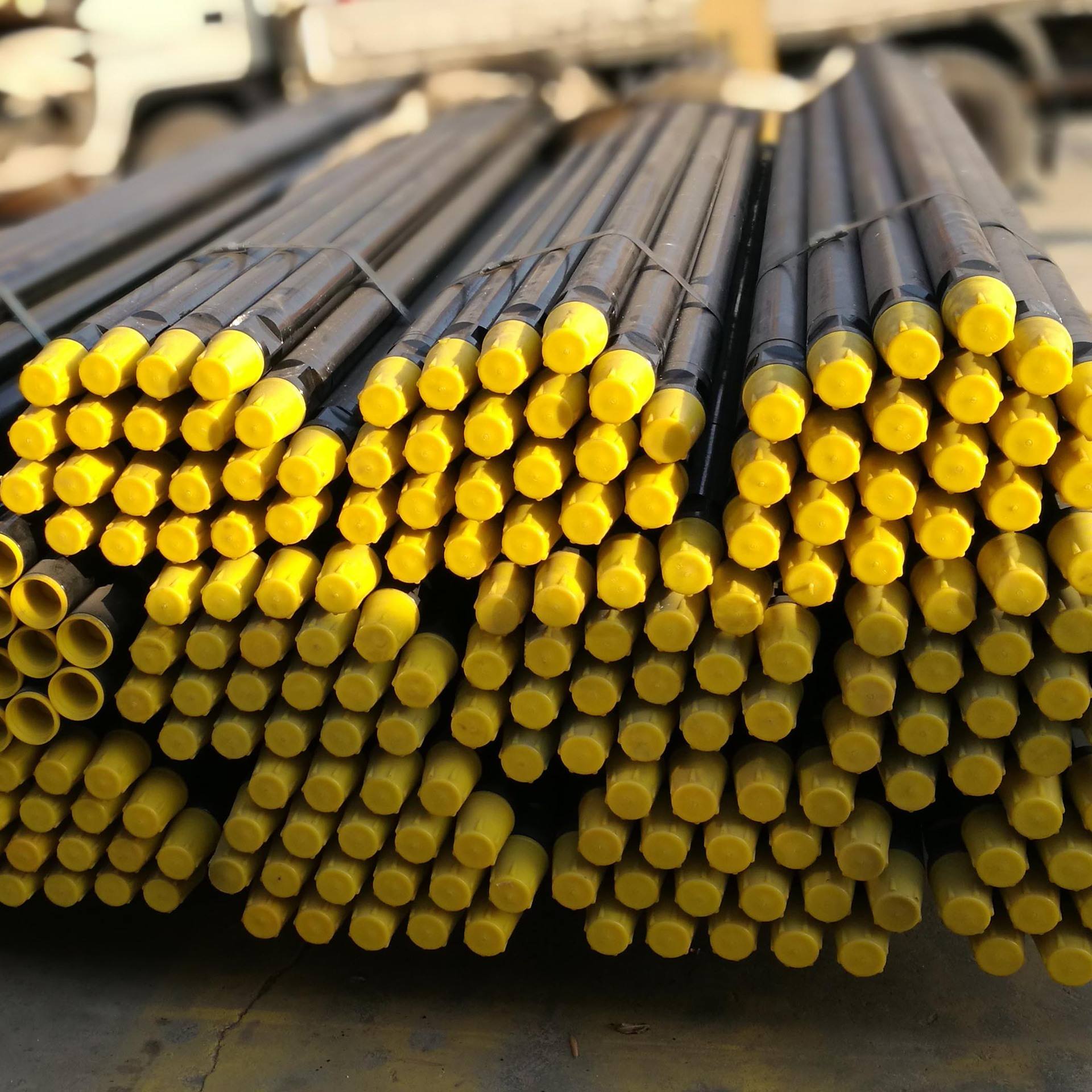How to use down-the-hole drill pipe
The operation of down-the-hole drill pipe surface equipment, cuttings and drilling pressure, torque, mechanical penetration rate, pressure and other surface instruments can directly reflect the underground conditions, and should be closely watched, especially torque, pump pressure, mechanical penetration rate and cuttings.
Torque changes depend on bottom hole conditions and rotational speed changes. Normal torque values are relatively stable. In soft or plastic homogeneous formations, the torque values are low. In medium-soft to medium-hard homogeneous formations, the torque values are in the middle. In hard formations, the torque values are larger and exist in a certain range. fluctuations. Torque changes may occur: centralizer drilling, drill bit gauge wear, inter layers, falling objects at the bottom of the well, key ways or doglegs in the well body, excessive drilling pressure, rotational speed changes, mud bags in the drill bit or bottom hole assembly, and With puncture leakage or dry drilling, etc.
Unstable pump pressure exists: mud bags in the drill bit, accumulation of cuttings in the annulus, flow fluctuations, drilling into broken formations or lumpy formations, and poor centering.
Changes in the mechanical penetration rate of down-the-hole drill pipes may include: changes in formations, changes in mud properties, changes in drilling pressure or rotational speed, wear and tear of drill bits or mud bags, changes in cleaning effects, and leakage of drill tools.
Through the cuttings, we can understand: formation type and lithology changes, pressure zone, whether the well bore has collapsed, the working condition and wear of the drill bit, and whether the drilling parameters are reasonable.





